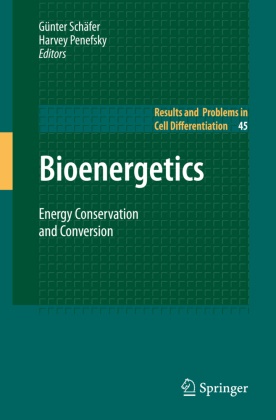Read more
The fermentation of sugar by cell-free yeast extracts was demonstrated more than a century ago by E. Buchner (Nobel Prize 1907). Buchner's observations put an end to previous animistic theories regarding cellular life. It became clear that metabolism and all cellular functions should be accessible to explication in chemical terms. Equally important for an understanding of living systems was the concept, explained in physical terms, that all living things could be cons- ered as energy converters [E. Schrödinger (Nobel Prize 1933)] which generate complexity at the expense of an increase in entropy in their environment. Bioenergetics was established as an essential branch of the biochemical sciences by the investigations into the chemistry of photosynthesis in i- lated plant organelles [O. Warburg (Nobel Prize 1931)] and by the discovery that mitochondria were the morphological equivalent that catalyzed cellular respiration. The ?eld of bioenergetics also encompasses a large variety of ad- tional processes such as the molecular mechanisms of muscle contraction, the structure and driving mechanisms of microbial ?agellar motors, the energetics of solute transport, the extrusion of macromolecules across membranes, the transformation of quanta of light into visual information and the maintenance of complex synaptic communications. There are many other examples which, in most cases, may perform secondary energy transformations, utilizing - ergy stored either in the cellular ATP pool or in electrochemical membrane potentials.
List of contents
Diversity of the Heme-Copper Superfamily in Archaea: Insights from Genomics and Structural Modeling.- Structure of Photosystems I and II.- Microbial Rhodopsins: Scaffolds for Ion Pumps, Channels, and Sensors.- Life Close to the Thermodynamic Limit: How Methanogenic Archaea Conserve Energy.- ATP Synthesis by Decarboxylation Phosphorylation.- The Three Families of Respiratory NADH Dehydrogenases.- Hydrogenases and H+-Reduction in Primary Energy Conservation.- A Structural Perspective on Mechanism and Function of the Cytochrome bc 1 Complex.- Regulatory Mechanisms of Proton-Translocating FOF1-ATP Synthase.
About the author
Dr.-Ing. Günter Schäfer studied computer science at the Universität Karlsruhe, Germany, from 1989 to 1994. After his studies he continued there as a member of the scientific staff at the Institute of Telematics. He received his doctorate on the topic Efficient Authentication and Key Management in High-Performance Networks in October 1998. In February 1999 he took a postdoctoral position at the Ecole Nationale Supérieure des Télécommunications in Paris, France, where he focused on network security and access network performance of third-generation mobile communication networks. Since August 2000, he has been at the Technische Universität Berlin, Germany, where he is involved in research and lectures on the subject of telecommunications networks. His main subject areas are network security, mobile communications, and active network technologies. Dr. Günter Schäfer is a member of the Institute of Electrical and Electronics Engineers (IEEE) and the Gesellschaft für Informatik (German Computer Science Society).
Summary
The fermentation of sugar by cell-free yeast extracts was demonstrated more than a century ago by E. Buchner (Nobel Prize 1907). Buchner’s observations put an end to previous animistic theories regarding cellular life. It became clear that metabolism and all cellular functions should be accessible to explication in chemical terms. Equally important for an understanding of living systems was the concept, explained in physical terms, that all living things could be cons- ered as energy converters [E. Schrödinger (Nobel Prize 1933)] which generate complexity at the expense of an increase in entropy in their environment. Bioenergetics was established as an essential branch of the biochemical sciences by the investigations into the chemistry of photosynthesis in i- lated plant organelles [O. Warburg (Nobel Prize 1931)] and by the discovery that mitochondria were the morphological equivalent that catalyzed cellular respiration. The ?eld of bioenergetics also encompasses a large variety of ad- tional processes such as the molecular mechanisms of muscle contraction, the structure and driving mechanisms of microbial ?agellar motors, the energetics of solute transport, the extrusion of macromolecules across membranes, the transformation of quanta of light into visual information and the maintenance of complex synaptic communications. There are many other examples which, in most cases, may perform secondary energy transformations, utilizing - ergy stored either in the cellular ATP pool or in electrochemical membrane potentials.

